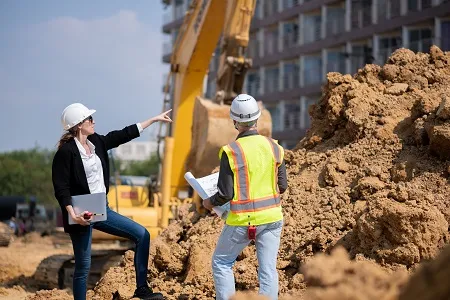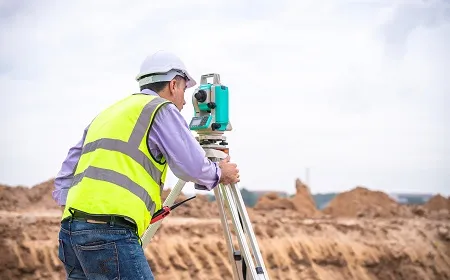Compliance in Construction industry
Walk past any Australian building site and you will see hard hats, safety fences and signs warning about hazards. These visible signals show that construction companies must follow many rules to keep workers, visitors and neighbours safe. But compliance—making sure every rule is met—goes far beyond high-vis vests and helmets. It covers paperwork, licences, training, environmental care, and reporting when things go wrong.
For a teenager watching a skyscraper rise, the process might look straightforward: dig a hole, pour concrete, bolt on steel, and add glass. In reality, each stage involves checklists, inspections and laws that change from state to state. Missing even one requirement can stop work, cost money and put people in danger. This article breaks down the main compliance challenges Australian builders face and explains how INDUCT FOR WORK helps companies meet their duties with less stress. We will also look at two related ideas—visitor management and incident reporting—that keep sites organised and transparent.
1. Juggling many safety rules
Every state and territory has a work health and safety (WHS) regulator—WorkSafe Victoria, SafeWork NSW, WorkSafe Queensland and so on. They all follow similar laws, but small differences mean a rule that applies in Brisbane might not be exactly the same in Perth. Builders must know which version is current, prove they trained workers on it, and update methods when the law changes.
Common safety duties include:
Making sure scaffolds and ladders are secure
Checking that cranes and forklifts have licences and daily inspections
Testing electrical leads and tagging them in set colours each quarter
Controlling silica dust when cutting tiles or bricks
Providing first-aid kits and trained responders on every site
For big companies, safety officers read new alerts each week. For smaller contractors, the site supervisor often does multiple jobs—ordering materials, leading tool-box talks, and filling out safety forms. Because humans can miss details, online induction platforms like Induct For Work shine. They hold the latest rules in one place and remind staff to re-take a module when standards change.
2. Managing licences and documents
A modern site might host carpenters, concreters, sparkies (electricians), plumbers, crane crews and traffic controllers—all needing different tickets. Forklift licences last five years. Elevated Work Platform (EWP) tickets vary by boom height. White Cards must be valid in the state where the job sits. If one document lapses and an inspector arrives, the fine can be thousands of dollars.
Traditionally, each worker carried plastic cards or paper copies. The site office kept a fat folder of photocopies, hoping everything was current. Now, Induct For Work lets workers upload a clear phone photo of each licence. The system checks expiry dates, sends automatic email reminders 30 days before they run out, and blocks sign-in for anyone overdue. This prevents a last-minute scramble and keeps auditors happy.

3. Bringing new people up to speed quickly
Construction is project-based. A company may hire fifty extra labourers for a high-rise, then release them when the frame is finished. Rapid turnover makes face-to-face inductions hard to arrange. Workers join at different times, often early in the morning before the concrete pour.
With online induction, a new employee can complete safety lessons at home the night before, watch videos on trench collapse prevention, and answer quiz questions on load limits. They arrive on day one already briefed, so the supervisor can start tasks sooner. For teens thinking about future jobs, this shows why reading and digital skills matter even on hands-on worksites.
4. Controlling visitors and delivery drivers
Large sites receive many visitors—engineers, council inspectors, clients and parents dropping off apprentices’ lunches. If a drill rig is operating near the gate, uncontrolled entry is risky. That is why visitor management has become a compliance topic. Modern systems link QR codes at the gate to the induction platform. A visitor scans the code, enters their name, car rego and mobile, then watches a two-minute safety clip about high-vis vests, falling objects and evacuation sirens. Only after finishing can the gate open or a pass print out. The log also proves to authorities that the site controls access and knows who is inside during an emergency.
5. Recording and learning from accidents
Even with good planning, incidents occur—someone slips on mud, a nail gun misfires, or a truck damages a street sign. The law says these events must be recorded and, in serious cases, reported to the regulator. Paper notebooks can get wet, blown away, or left in a ute. Online incident reporting within Induct For Work lets supervisors fill a short form on their phone, attach photos, and tag witnesses. Safety managers see the report instantly, begin an investigation and track corrective actions, like extra guardrails or new signage. Over months, data pinpoints common hazards so the company can fix root causes, lowering injury rates.
6. Handling environmental and community rules
Builders also face noise restrictions, dust limits and waste-sorting laws. Concrete trucks must not wash chutes into drains. Heritage zones need special permits before earthmoving. Failure can halt work or spark residents’ complaints. Induct For Work stores site-specific environmental plans and quizzes workers on correct procedure—where to place sediment barriers, how to dispose of paint tins, and when to stop jack-hammering (often after 5 p.m.).
7. Ensuring subcontractors follow the same standards
Head contractors hire many subcontractors. If a subbie’s worker cuts corners, the main builder is still liable. Online induction systems push consistent training to external crews. The head office views completion rates for all companies on site, locking out anyone who skips the process. This levels the playing field and protects the project timeline.
8. Real-time proof for audits and insurance
Banks, developers and insurers want evidence that safety and quality systems are robust. Instead of pulling dusty binders from a container, managers can export Induct For Work dashboards showing:
Percentage of staff who passed the working-at-heights quiz
List of current high-risk licences with expiry dates
Log of toolbox talks, visitor entries and incident investigations
This transparency builds trust, can reduce insurance premiums and wins future tenders.
Practical tips for smaller builders
Not every firm has a safety department. Here are quick steps a small crew can take:
Choose an online induction tool – Induct For Work offers pay-as-you-go plans suitable for teams of five or fifty.
Upload key modules – Start with White Card basics, site rules, manual handling and PPE usage.
Add licence photos – Ask every worker to snap and upload tickets before arrival.
Set up visitor QR codes – Even a simple phone on a stand at the gate can capture details and play a short safety video.
Train supervisors on incident reporting – Make it a normal habit: “If it happened, log it on the phone.”
Review data monthly – Look for common hazards to improve controls.
Looking ahead
Construction technology advances fast—drones map sites, robots tie rebar, sensors track concrete curing. Compliance tools must keep pace. Induct For Work integrates with access turnstiles and project-management software, creating a live map of who is trained, who is visiting and what incidents need follow-up.
Do you have any questions or great tips to share?
Induct for Work – the only online induction system you would need to run online inductions.



